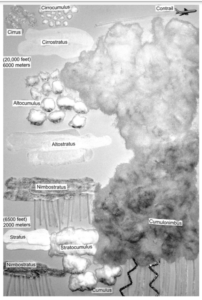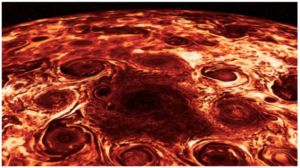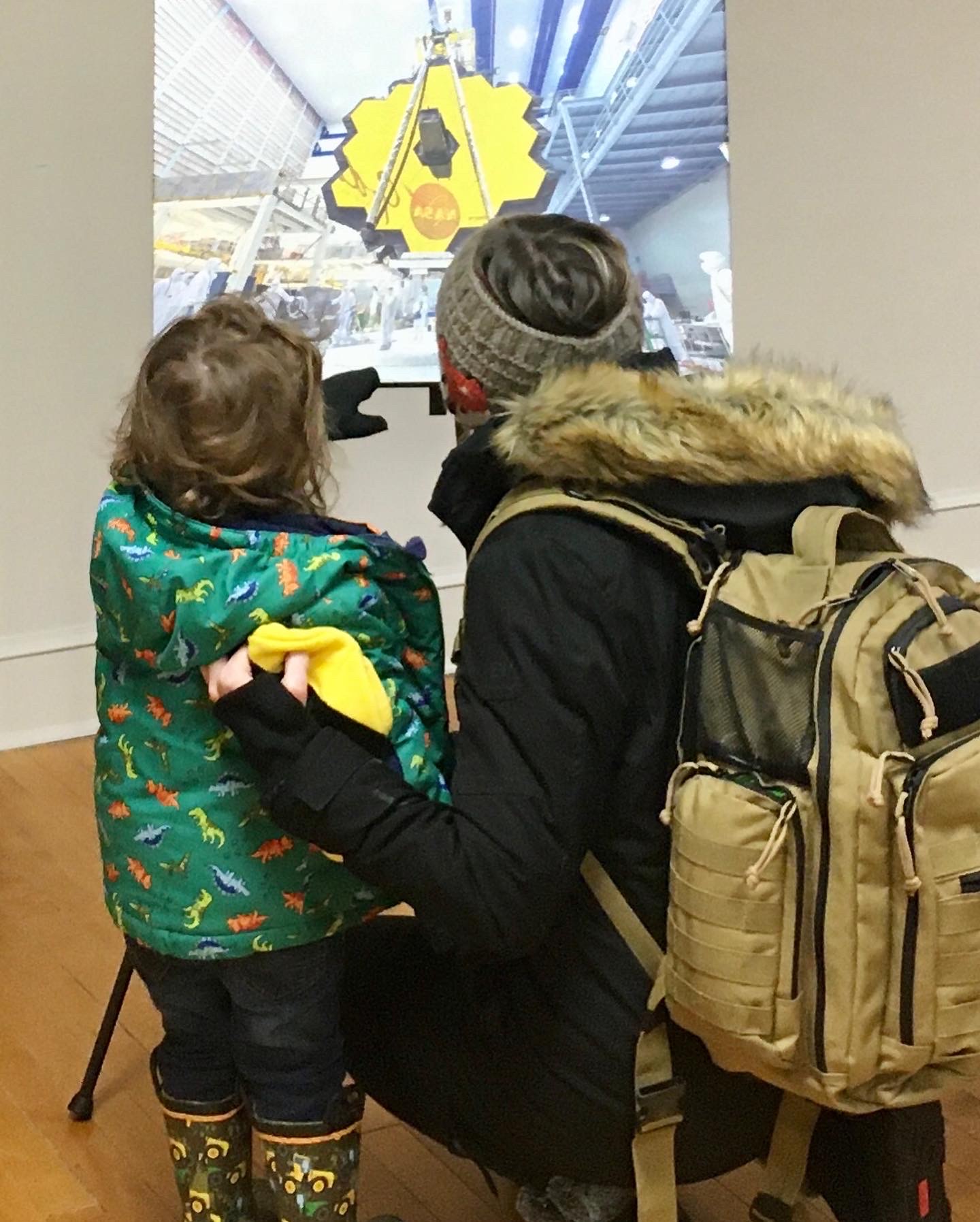Marilé Colón Robles, the project scientist for NASA Globe Clouds and her daughter Madison demo a Cloud Journal in the Do You Know that Clouds Have Names?
STAR Net’s Our Blue Planet: EARTH campaign is a celebration of NASA’s focus on Earth’s oceans, understanding how they are changing and their impact on sea life and our weather and climate systems. Participate in this event during the summer of 2022 by sharing activities and resources with your patrons! This month’s featured activities are GLOBE Observer: Clouds and Cloudscape.
Citizen scientists of all ages are invited to make environmental observations that complement NASA satellite observations and help scientists studying Earth and the global environment. These activities can be done with little to no experience with cloud knowledge. Depending on the activity, you can prepare in as little as 15 minutes. Facilitate as an in-person program at your library or as a demonstration for a virtual program.
Prep the program: 20-40 minutes.
To cut down on prep time, keep this fact sheet handy to prepare for a program or develop a script: Quick Facts sheet by Globe Observer. Also, if you are doing a Guide on the Side approach, you can share the fact sheet with patrons (depending on age group) and they can help answer questions. If you are part of NASA@ My Library, consider inviting a near peer SME to lead the activity.
Estimated time for the program: 30 – 60 minutes
Ages: Cloudscape is most appropriate for K-4 but the Cloudscape handout has adaptations for all ages and can be done as a family. Activities from GLOBE Observer may be modified for all ages.
Modification and Preparation List
Total Cost: $5-10
Fundamental Space Science Concepts – GLOBE Observer: Clouds and Cloudscape relate to Our Blue Planet: EARTH
Have you ever looked at a cloud and imagined the shape is similar to an animal? Or just been curious – what is a cloud?
Clouds are tiny droplets of water formed into a mass.
Where does the water in clouds come from? The water is from the land or oceans on the Earth. The water rises, turns into vapor, cools and then turns into droplets.
Which type of clouds can tell us that it’s likely to rain? “The Latin word “nimbus” means rain. Nimbus is added as a prefix or suffix to the two clouds that produce precipitation: nimbostratus or cumulonimbus clouds.
Take a look at Figure 5 to see “nimbus” clouds. Clouds can tell us about all kinds of weather. Be sure to check out the Modification and Preparation list to find out more about what cloud shapes, color, and height in the sky can tell us.

Are there clouds on other planets? Yes! Mars has clouds that are like the clouds on Earth. But other planets have clouds that aren’t made of water. that are like the clouds on Earth. But other planets have clouds that aren’t made of water.
The entire planet of Jupiter is covered in bands of swirling clouds high in the atmosphere that are likely made mostly of ammonia.

NASA’s Jupiter-orbiting spacecraft, Juno, gave scientists their first look at Jupiter’s poles. There they found enormous cyclones surrounded by slightly smaller cyclones, each several thousand miles across. This image from Juno shows nine cyclones at Jupiter’s north pole. Credit: NASA/JPL-Caltech/SwRI/ASI/INAF/JIRAM
These activities integrate art with STEM = STEAM. Dance, movement, poetry, and art are included and help strengthen fundamental space science concepts.
Encourage your community to learn about clouds using these activities:
Cloudscape will guide you to create a sky scene full of different clouds found at different heights in the sky. You and your patrons could make a mural using butcher paper on a wall at your library. If this is a virtual activity, patrons can draw the clouds on a sheet of paper to share with the group.
Marilé Colón Robles, the project scientist for NASA Globe Clouds along with her two daughters use movement and dance to describe clouds in Do You Know that Clouds Have Names? If you’re looking for a female, Latina NASA role model this is your video! You can get an idea of what a cloud journal looks as Marilé and her daughter do a show and tell of a cloud journal. As an alternative to creating a journal, there is also the Globe Observer app.
Resources for you to use and share with patrons:
NASA Video: Do You Know that Clouds Have Names? :
Marilé Colón Robles, the project scientist for NASA Globe Clouds and her two daughters provide a delightful guide and inspiration for three activities: Identifying clouds with a cloud dance, creating a cloud triangle, and a cloud journal. 6 mins 50 sec
Marilé mentions these resources in the video:
For more advanced study of clouds, take a look at the GLOBE Cloud ID chart.
FREE BOOK: Storybook: Do You Know That Clouds Have Names? Free PDF, ebook or print on demand. You can also get this book in Spanish, Arabic, French, German, and Norwegian. Designed to introduce K-4 students to the study of Earth system science. 36 pages
NASA Goddard Video: Anatomy of a Raindrop
This video will help you understand the shape of a raindrop. It may be surprising to you that a raindrop does not start off as a tear drop! 2 mins 50 sec
NASA Goddard Video: GLOBE Observer Clouds: Getting Started
This video will walk you through using the app. 2 mins 35 sec
STAR Net’s Our Blue Planet: EARTH Event Page
STAR Net Blog: NASA GLOBE Clouds 20
How do you get started creating programs about clouds? Vivienne Byrd at the Los Angeles Public Library (LAPL) Neighborhood Science (NeiSci) program shares recommendations for how to get started.
Want to inspire your audience to be scientists? Find out more about Marilé Colón Robles who won a NASA Langley Research Center Women of Color in STEM Award.
Discover more Our Blue Planet: EARTH Toolkit activities at the STAR Net Clearinghouse.
Sources: (Fundamental Science Concepts)
Globe Observer, Quick Facts for Informal Educators.
NASA Science Space Place, What Is the Weather Like on Other Planets? Accessed 01/12/22
This content was written by Jessica Santascoy, Project Manager at the Space Science Institute




Leave A Comment